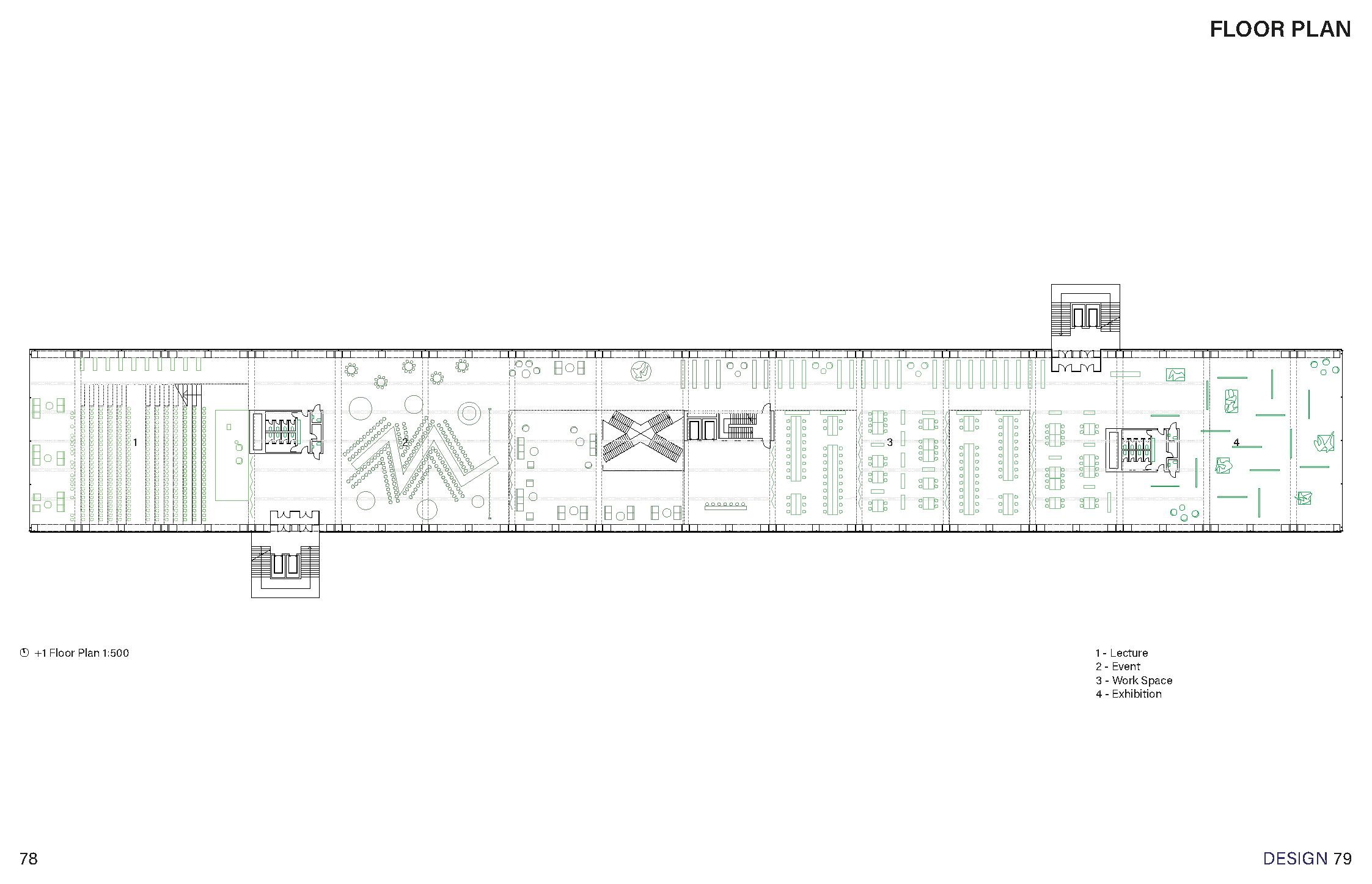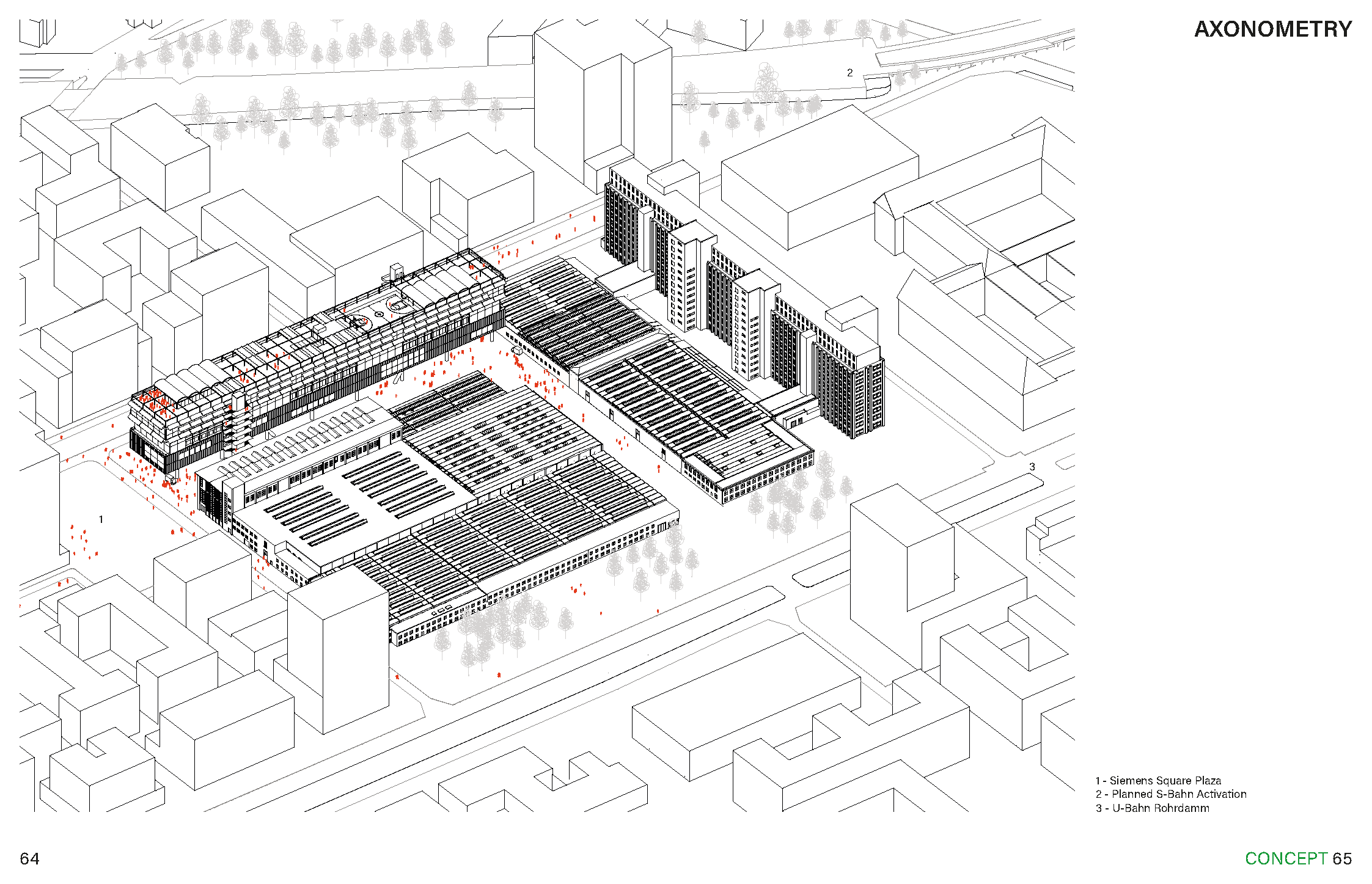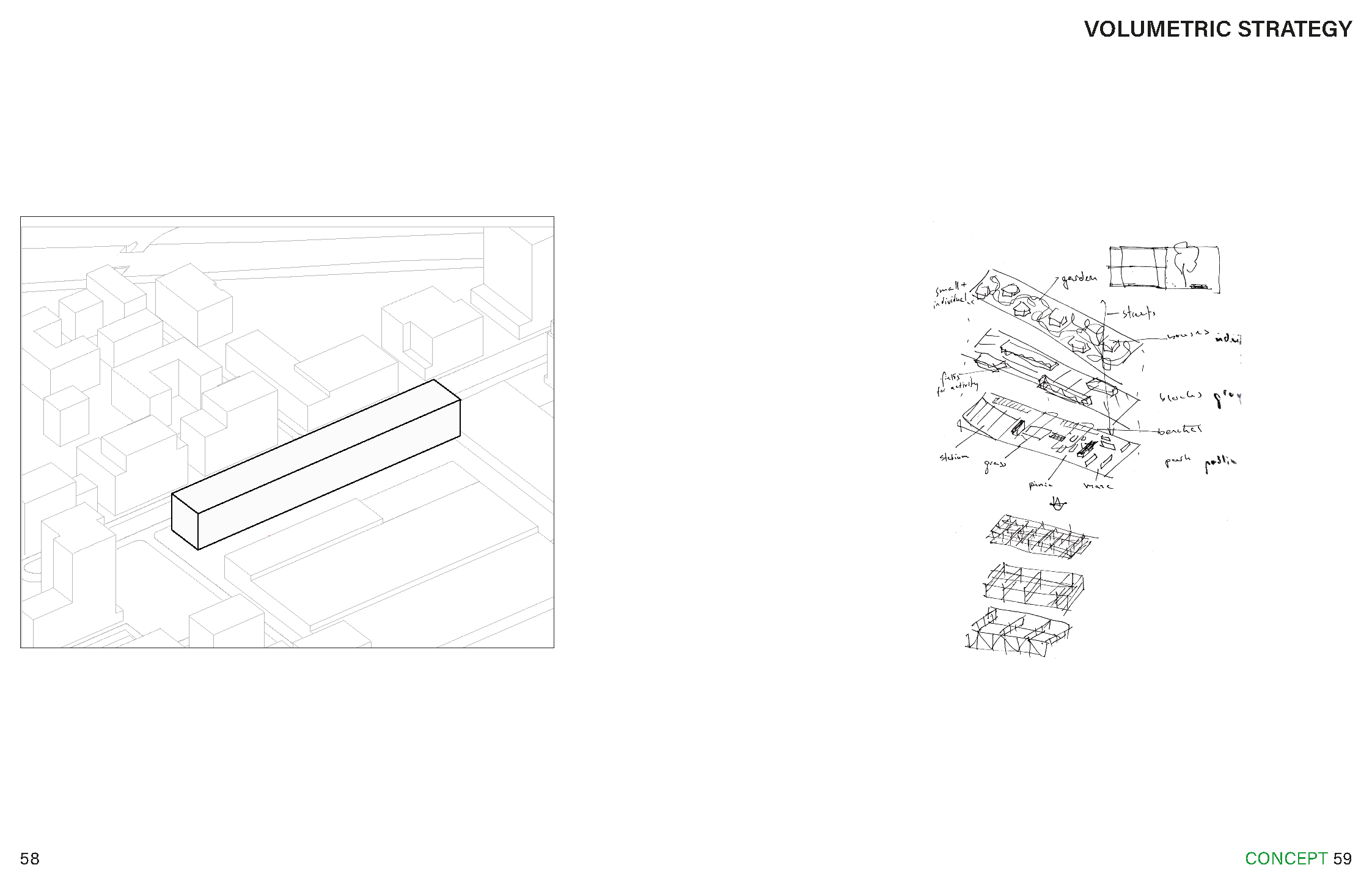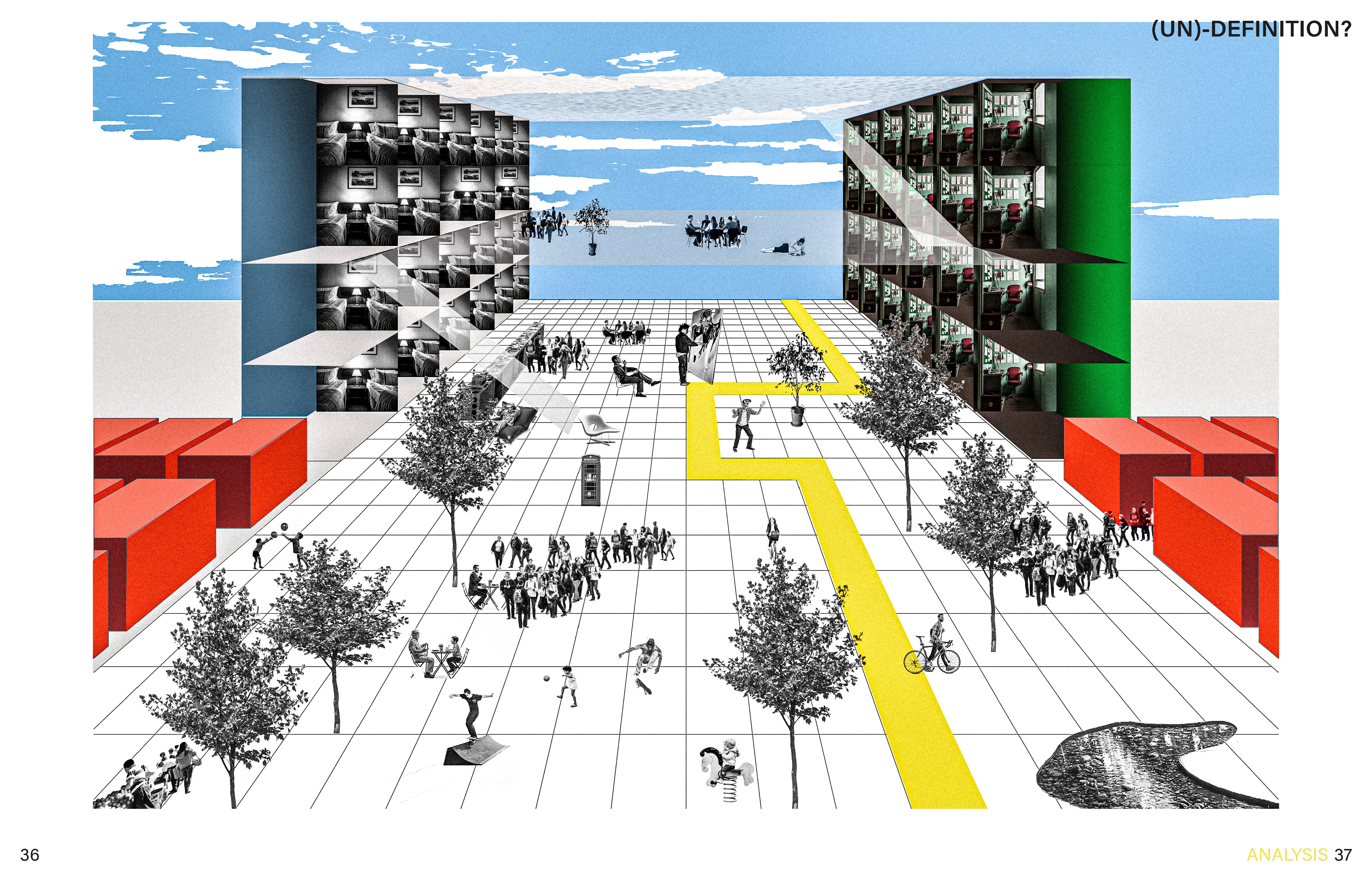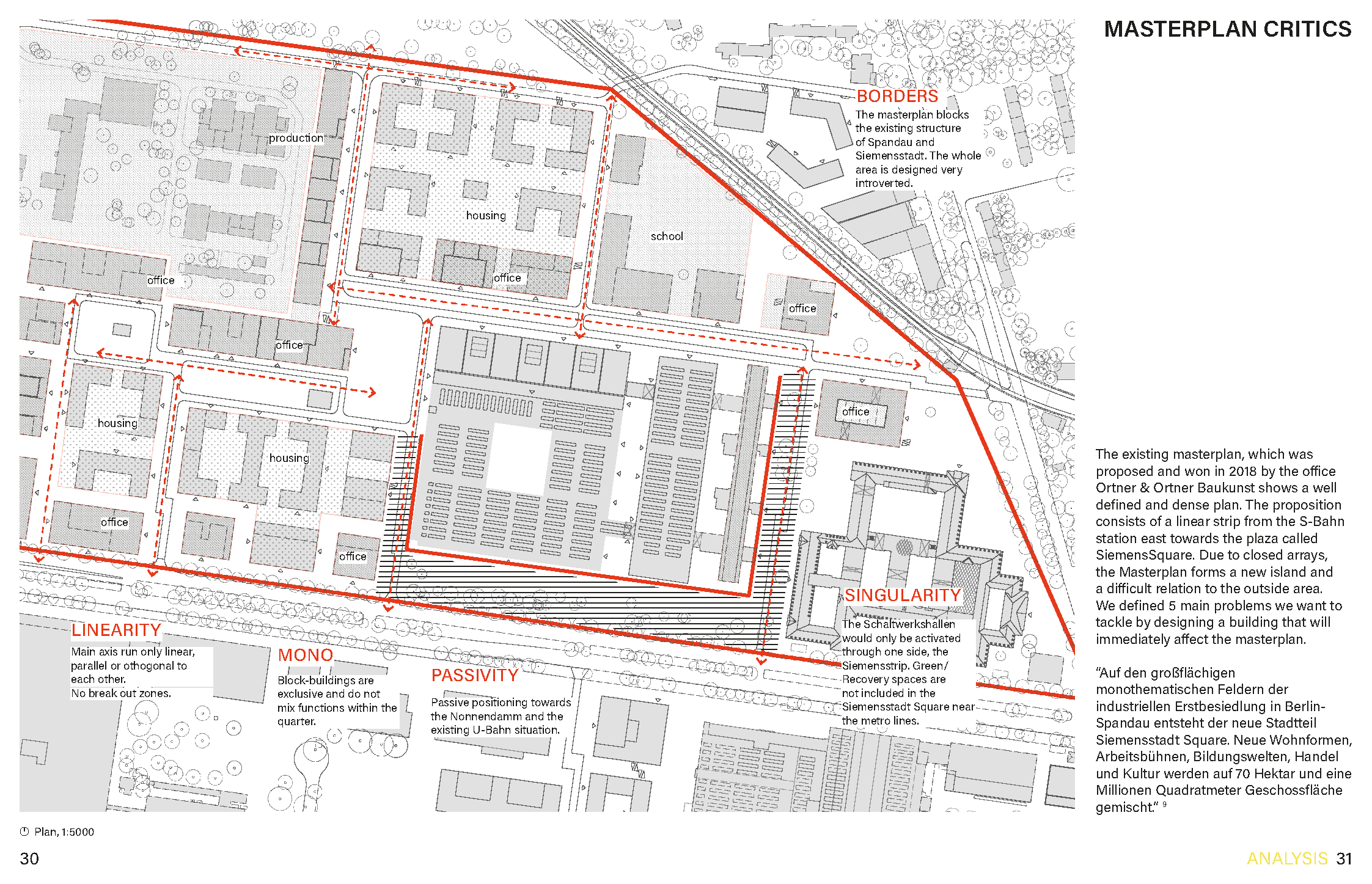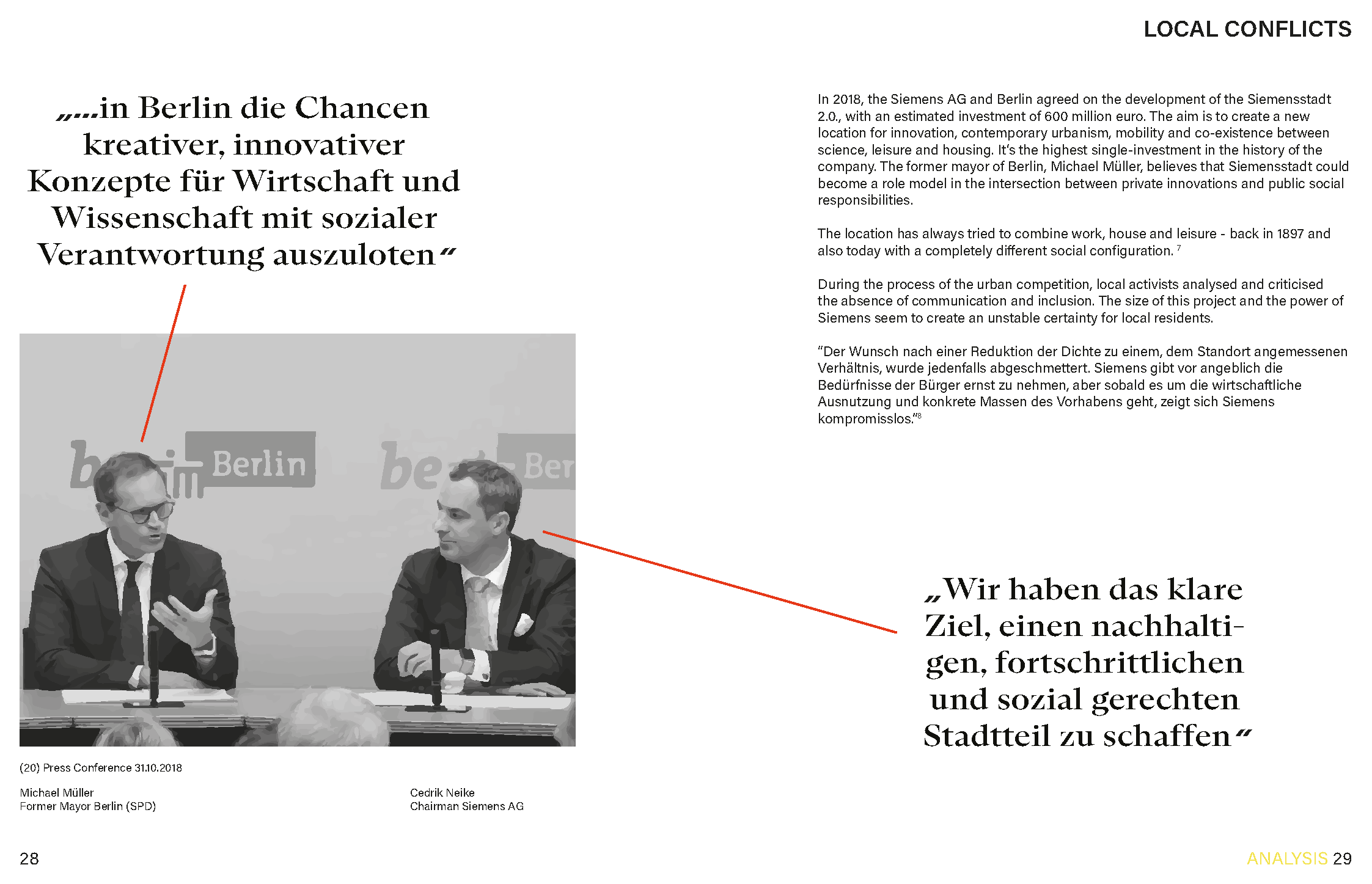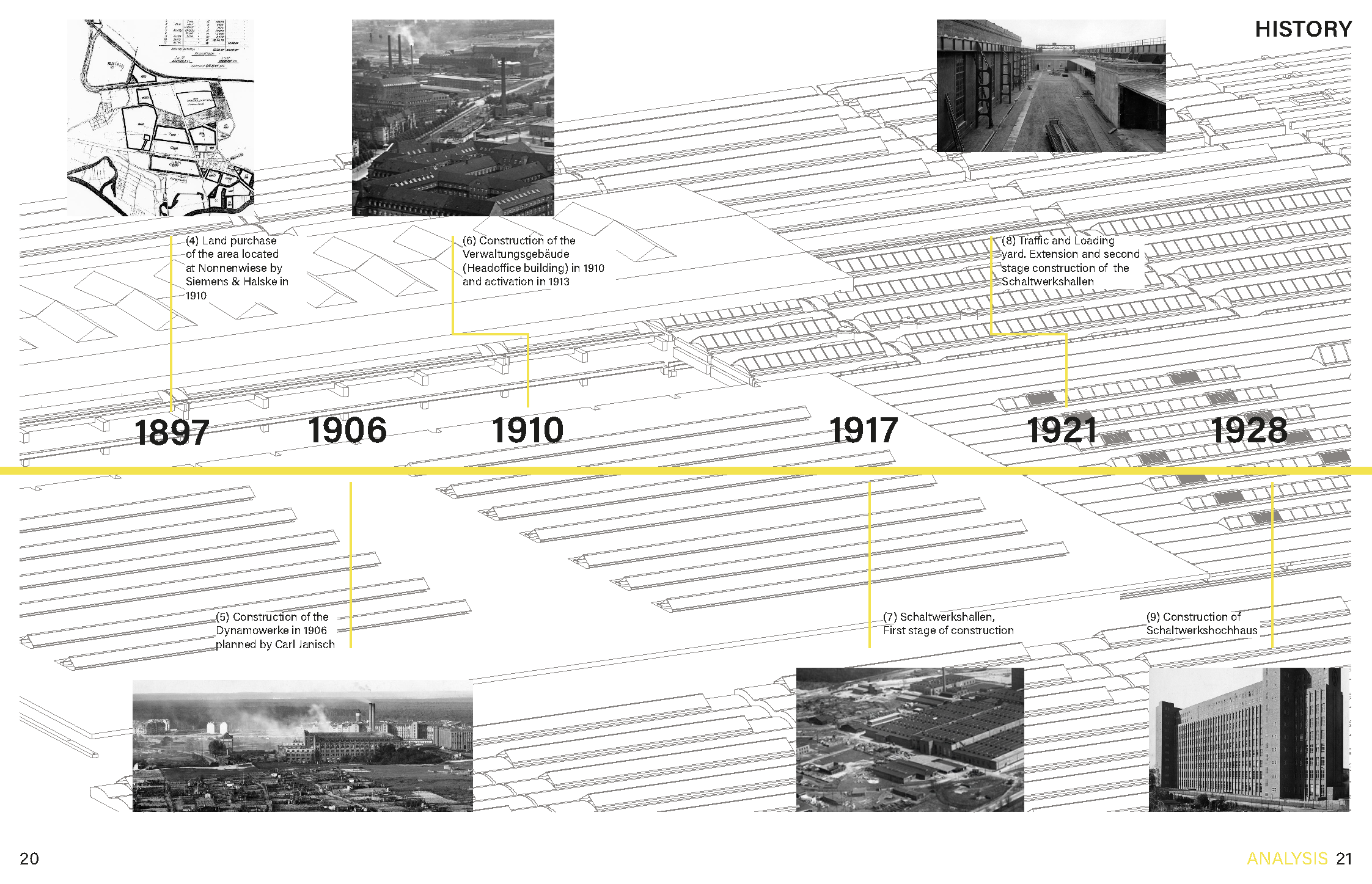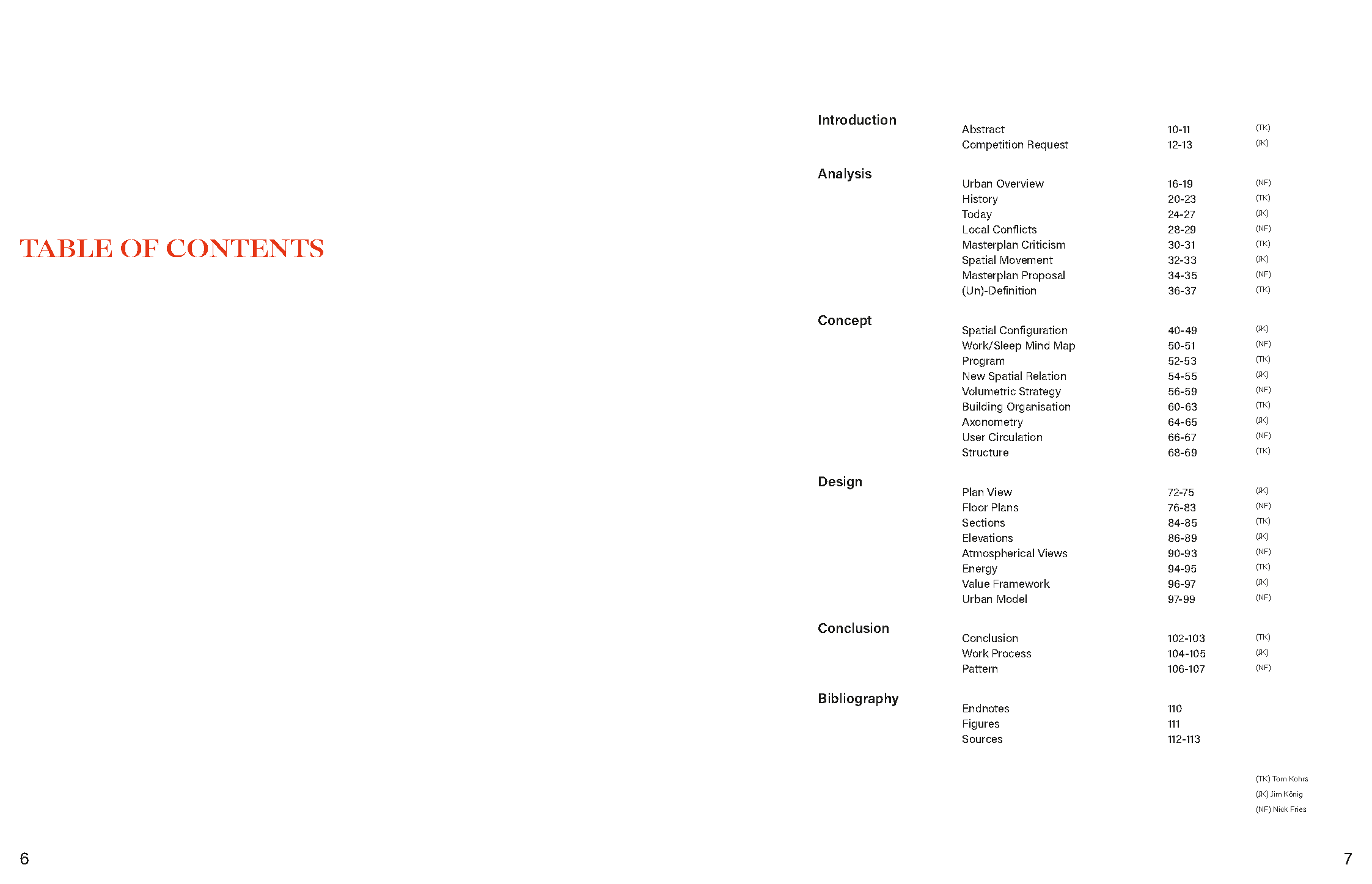_daydreams & nightshifts (Bachelor thesis)
In Zusammenarbeit mit :
Nick Fries, Tom Kohrs
Prof. Jacob van Rijs FGVANR
WiSe 21/22
TU BERLIN
Are casual business trips still a future scenario? Isn‘t this something we should fade out? The terms “work” and “hotel” have been redefined in the last few years due to changes in our global ensemble. Globalisation has been pushed further to digitalisation and virtual worlds. Our thesis is a combination between theoretical scenarios and a very practical design approach to fulfil the requirements of an architecture competition. We tried to break ordinary plans and concentrated on a sustainable social future. We follow the idea of an inclusive building that will maintain value over time, not only profit-wise, rather giving valuable spaces for people. A balance between private and common space? How much work do we need in the future? And how do we get rewarded for what we do?
Hotels as well as offices usually work very binary. Soaked up in hyperfunctional, well planned and most profitable hotel room combinations. They constitute the theory of profit oriented design. Floor plans inside Hotels are comparable to the legroom in low-cost airlines to maximise the income per flight. It is almost an architectural design, compressing as many rooms as possible into a shell. The result? An ever and ever repeating typology - small rooms and long, dark corridors.
Our proposed design takes place in a wider context of Siemensstadt and substitutes the long term shift from a former monofunctional production site, the Schaltwerkshallen, towards a multi-scattered cultural district. A new standard hotel and office building for Siemensstadt would just be another magnet for exclusiveness. Our idea is to include as many actors as possible at any time, while still providing a functional hotel and working area.
The inner structure of our proposal tries to tackle the notion of the classical hotel by mixing the programs and maximising the open zones and common space, therefore turning down the need for corridors. The building works as an extension and projection of the surrounding plaza. An invitation for local people, people with low requirements of stay as well as people wanting to book a simple hotel room. To provide different configurations, the building consists of three stacked structures which form a basic shell - then filled with complex program relations and actors‘ circulations.
Credits:
(1) - Thomas Demand. Room (Zimmer). 1966. Chromogenic color print. 172x232 cm. The Museum of Modern Art, New York. 2005
(2) - Robin Scherbatsky in “How I met Your Mother”, CBS Production, Episode 04 Season 07. 2012












